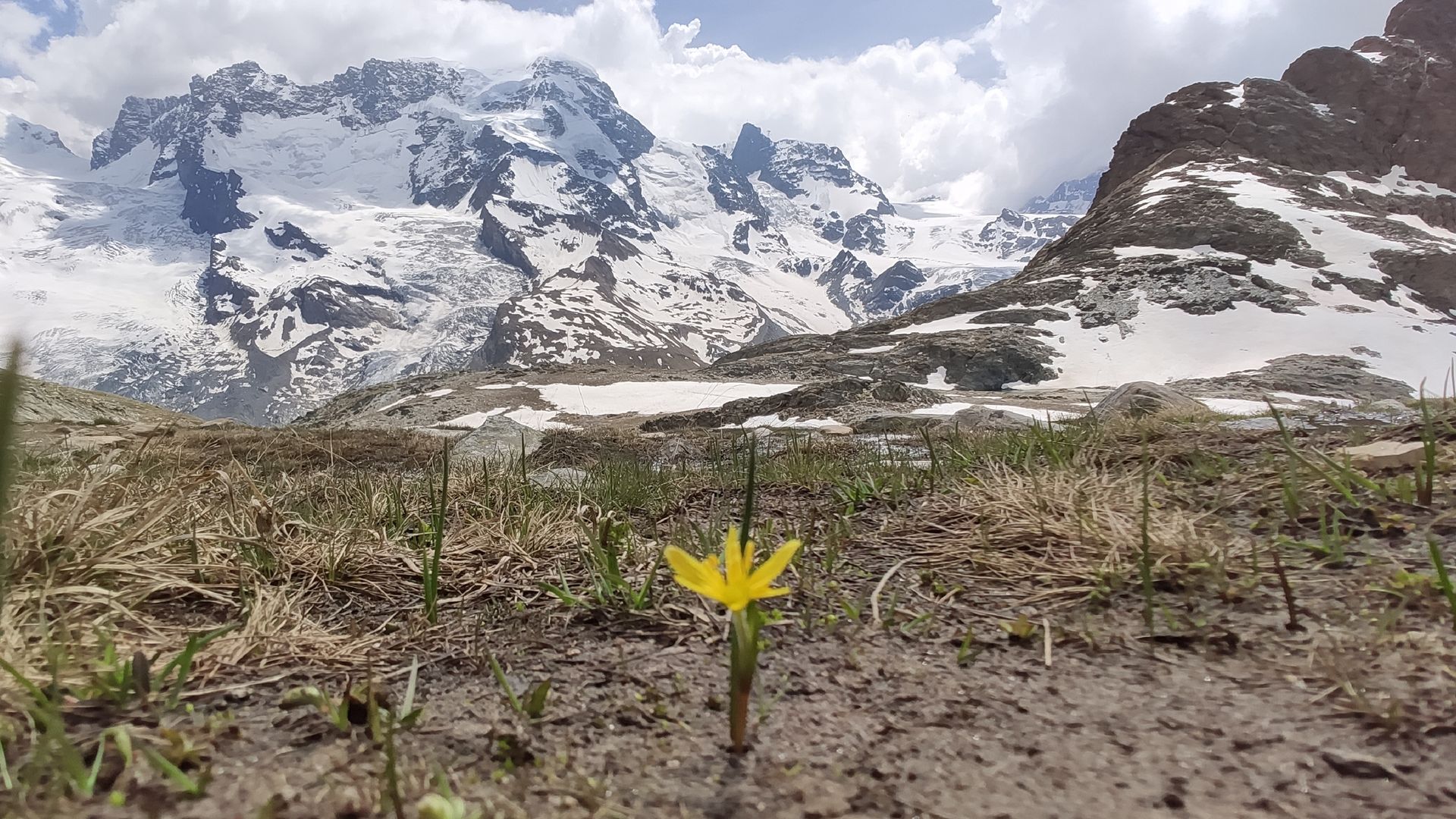Röhriger Gelbstern
Gagea fragifera (Vill.) Ehr. Bayer & G. López
If you want to see the Tubular Yellow Star Lily in bloom, you have to start looking early in the year. The pretty yellow star-like blooms are usually visible shortly after the snow melts. Once they have withered, the species is hard to spot. Gagea species are very popular among plant lovers. These pretty relatives of the tulip are only seen for a short time in the year and some species are very rare. The Tubular Yellow Star Lily can be identified by its rounded leaves, which are somewhat reminiscent of chives. The bulbous plant barely exceeds 15 cm and the flowers are about the size of a single franc piece.
Facts and Figures
Of the approximately 200 species of Gagea known worldwide, only a few can be found in the Alps. In Central Asia and the Mediterranean, you can find what you are looking for much more quickly by going on a “yellow star hunt”. If you take a closer look at these delicate plants, the connection with the much better-known tulips becomes obvious. Like tulips, the Tubular Yellow Star Lily has storage organs (“bulbs”), which allow them to quickly develop flowers and leaves in spring. When it has bloomed, it produces fruits reminiscent of strawberries. This is why the scientific name is “fragifera,” which translates as “strawberry bearer”.
Territory
It is widespread in the Alps, even if it is rarely seen due to its early flowering. It likes to grow in nutrient-rich soils, such as around barns or on the edges of paths. more information
